Services
Comprehensive dental care using advanced illumination.

General Dentistry Services
General Dentistry
Examination: are necessary to identify potential dental and medical problems such as gum disease, bone loss and infections with a focus on each patients individual needs and concerns.
X-rays: Regular X-rays and other diagnostic tools help detect issues such as cavities, bone loss, or other conditions that may not be visible during a routine exam.
1. Panoramic X-ray: A type of dental imaging that provides a broad, comprehensive view of the entire mouth, including the upper and lower jaws, teeth, and surrounding structures. This type of X-ray is useful for:
- Evaluating the overall structure: Assessing the alignment and health of the jaws and teeth.
- Detecting issues: Identifying problems like impacted teeth, jaw disorders, cysts, tumors, and bone loss.
- Implant Planning: Helps in planning dental implant placement by assessing bone density, volume, and anatomical structures.
- Orthodontics: Aids in diagnosing and planning complex orthodontic cases by providing a clear view of the teeth and their roots.
- Oral Surgery: Assists in planning and executing oral surgical procedures, including the removal of impacted teeth and reconstructive surgeries.
- Assessment of Pathologies: Helps in identifying and evaluating conditions such as tumors, cysts, and bone abnormalities.
- TMJ Analysis: Provides detailed images of the temporomandibular joints (TMJs), which are crucial for diagnosing disorders in these joints.
Preventative care in dentistry focuses on maintaining oral health and preventing dental issues before they arise. Here are some key aspects:
Regular Cleanings and Check-ups: Routine visits to the dentist (typically every 6 to 12 months) for cleanings and exams help remove plaque and tartar, check for early signs of dental problems, and address issues before they become serious.
Fluoride Treatments: Fluoride helps strengthen tooth enamel and make it more resistant to decay. Professional fluoride treatments are often applied during dental visits.
Dental Sealants: Thin, protective coatings applied to the chewing surfaces of back teeth (molars) to prevent cavities, especially in children and teenagers.
Oral Hygiene Education: Dentists and hygienists provide guidance on proper brushing and flossing techniques, as well as advice on maintaining good oral hygiene practices at home.
Mouthguards: Custom-fitted mouthguards for patients who grind their teeth, play contact sports, or have other risk factors, to protect teeth from damage.
Cancer Screenings: Early detection of oral cancer through regular examinations, which can be crucial for successful treatment.
By focusing on these preventative measures, we aim to reduce the risk of serious dental issues and help patients maintain healthy, functional teeth and gums throughout their lives.
Composite fillings, also known as (white) tooth-colored fillings, are a popular choice for patients wanting to maintain a natural look. The composite material is matched to the natural color of your teeth, making composite fillings virtually invisible. Composite material is durable and typically involves removing less of the tooth than is required for amalgam fillings. Composite fillings may also be used for chipped or broken teeth and filling gaps between teeth.
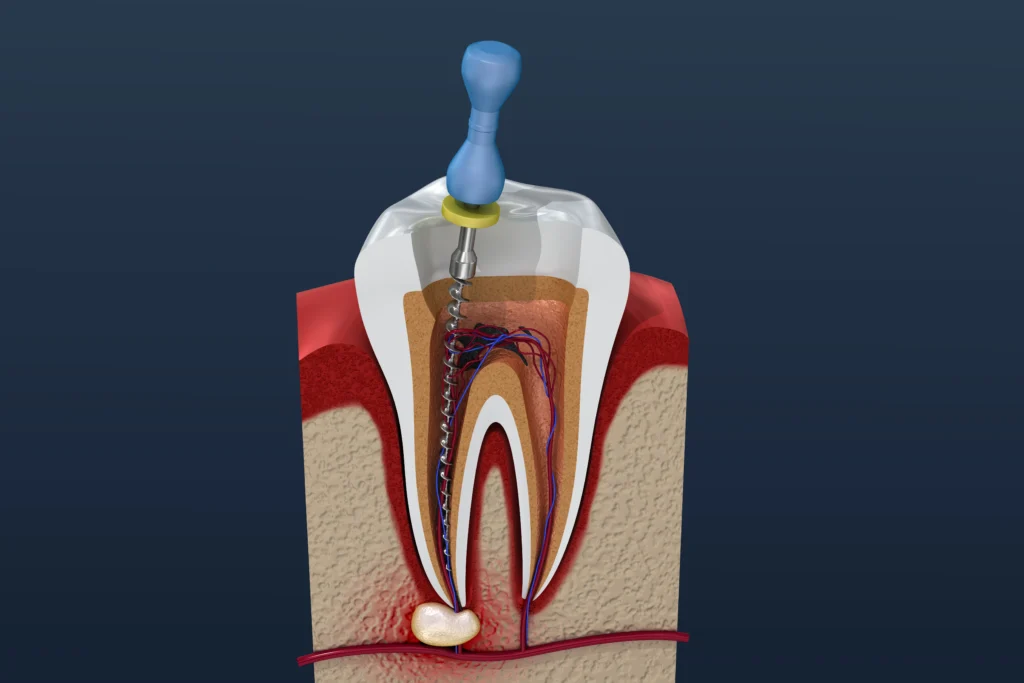
Endodontic Dentistry Services
Endodontic Dentistry
Root canal therapy is a dental treatment used to repair and save a tooth that has been infected due to decay or cracking. Teeth that have been injured and compromised can also be treated with root canal therapy to maintain function and longevity.
A root canal involves the removal of the pulp of the tooth. The pulp contains connective tissue, nerves and blood vessels. The advantage of a root canal is that it enables you to keep and use your tooth. Signs that root canal therapy may be needed are:
• Severe tooth pain while chewing
• Pain that wakes you up at night
• Teeth that are sensitive to hot or cold
• Discoloration or darkening of the tooth
• Swollen gums in the area of the infected tooth
We know the mention of a root canal can raise anxiety in many patients. That is why Illumination Dentistry is dedicated to the comfort and care of all our patients. Our team of friendly dental technicians and staff is dedicated to making your procedure as stress-free as possible.
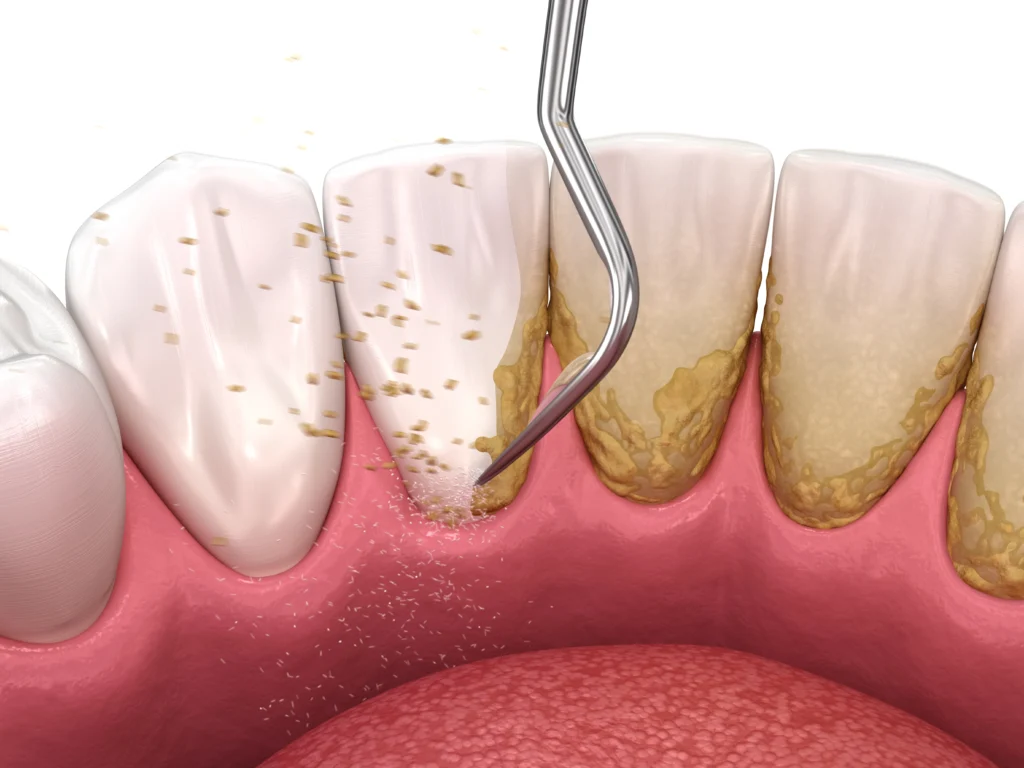
Periodontic Dental Care Services
Periodontal Dental Care
Scaling and root planing is a deep-cleaning procedure used in dentistry to treat gum disease (periodontal disease) and maintain oral health.
Purpose: Scaling involves the removal of plaque (a soft, sticky film of bacteria) and tartar (hardened plaque) from the surfaces of the teeth and beneath the gumline. Plaque and tartar can contribute to gum disease and other oral health issues.
Procedure: Scaling is performed both above and below the gumline. For patients with deeper pockets or more severe gum disease, scaling is done in sections, sometimes over multiple visits.
Crown lengthening removes gum and bone tissues, exposing more of the tooth to allow room for the new crown. Crown lengthening is sometimes also a cosmetic procedure option for patients with a “gummy smile,” which means you have too much gum tissue around your teeth.
A gingivectomy, commonly known as gum contouring, gingival sculpting, or gum reshaping, is a cosmetic dental procedure that reshapes the gumline. The treatment improves your smile by changing the look and shape of your gums and teeth.
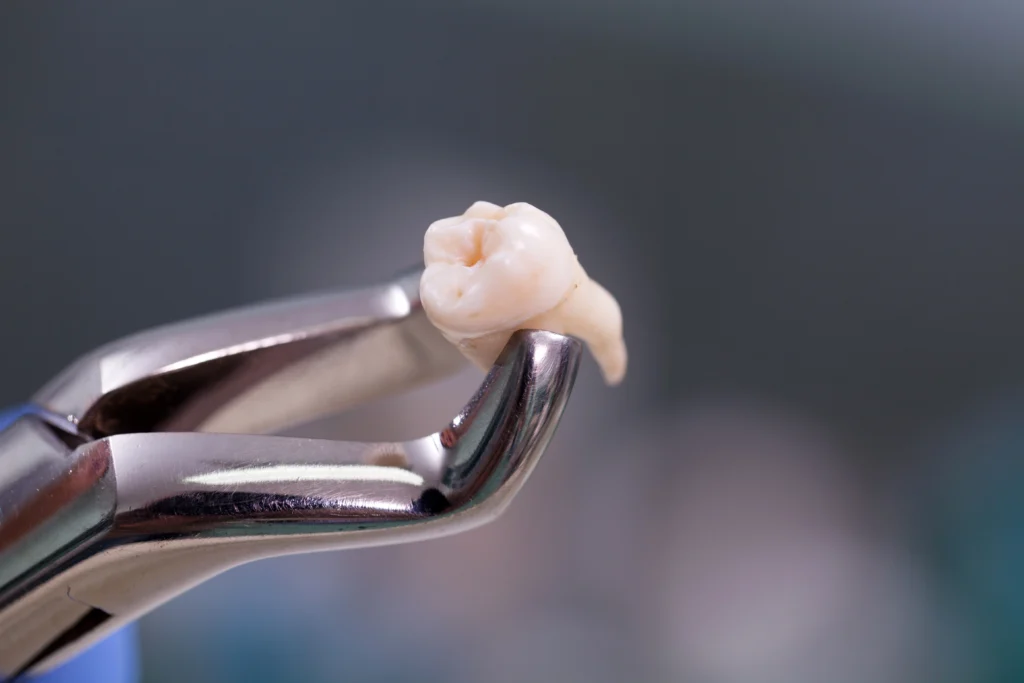
Oral Surgery Services
Oral Surgery
– Simple Tooth Extraction:
In a simple extraction, the dentist loosens the tooth with an instrument called an elevator. Then, using dental forceps, the dentist removes the tooth. This procedure is generally done under a local anesthetic and is typically used for visible teeth that are fully erupted from the gum line.
– Surgical Tooth Extraction:
Surgical extraction is a more complex procedure that is used for teeth that may be broken at the gum line or haven’t erupted in the mouth. The dentist will make a small incision into your gum to surgically remove the broken tooth or impacted wisdom tooth. In some cases, removing bone around the tooth or cutting the tooth itself may be necessary.
A dental bone graft is a procedure performed to increase the amount of bone in a part of the jaw where bone has been lost or where additional support is needed. This material is crucial for successful outcomes in treatments such as dental implants and when teeth are removed.
Oral cancer screening is an examination performed by a dentist to look for signs of cancer or precancerous conditions in your mouth. The goal of oral cancer screening is to identify mouth cancer early, when there is a greater chance for a cure. Most dentists perform an examination of your mouth during a routine dental visit to screen for oral cancer. Some dentists may use additional tests to aid in identifying areas of abnormal cells in your mouth. No single oral exam or oral cancer screening test is proved to reduce the risk of dying of oral cancer. Still, you and your dentist may decide that an oral exam or a special test is right for you based on your risk factors.
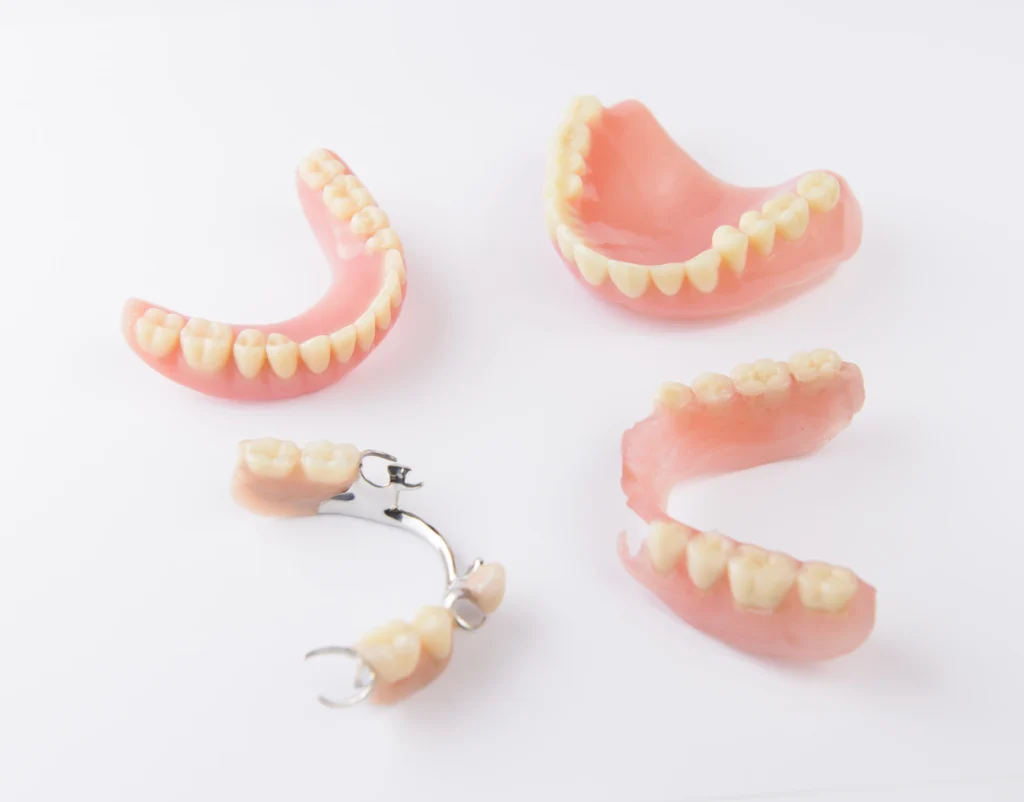
prosthetic Dental Care Services
Prosthetic Dental Care
A crown is used to entirely cover a damaged tooth to strengthen it, to improve its appearance, shape or alignment. These are used to protect a weak tooth, teeth that have had a root canal, replace a defective large filling, cosmetic purposes and in restoring a dental implant.
A dental bridge is a dental restoration procedure used to replace one or more missing teeth. It’s named so because it literally bridges the gap where teeth are missing. A bridge is made up of two or more crowns for the teeth on either side of the gap (known as anchoring teeth or abutment teeth) and a false tooth/teeth in between (known as pontics). These false teeth can be made from different materials such as gold, alloys, porcelain or a combination of these materials. Dental bridges are supported by either natural teeth or dental implants. It not only helps restore the aesthetics of your smile, but also ensures proper function of the teeth and prevents remaining teeth from drifting out of position.
Dentures (also known as false teeth) are prosthetic devices constructed to replace missing teeth, and are supported by the surrounding soft and hard tissues of the oral cavity. Conventional dentures are removable (removable partial denture or complete denture). However, there are many denture designs, some which rely on bonding or clasping onto teeth or dental implants (fixed prosthodontics). Two types of dentures are available — complete and partial dentures. Complete dentures are used when all the teeth are missing, while partial dentures are used when some natural teeth remain.
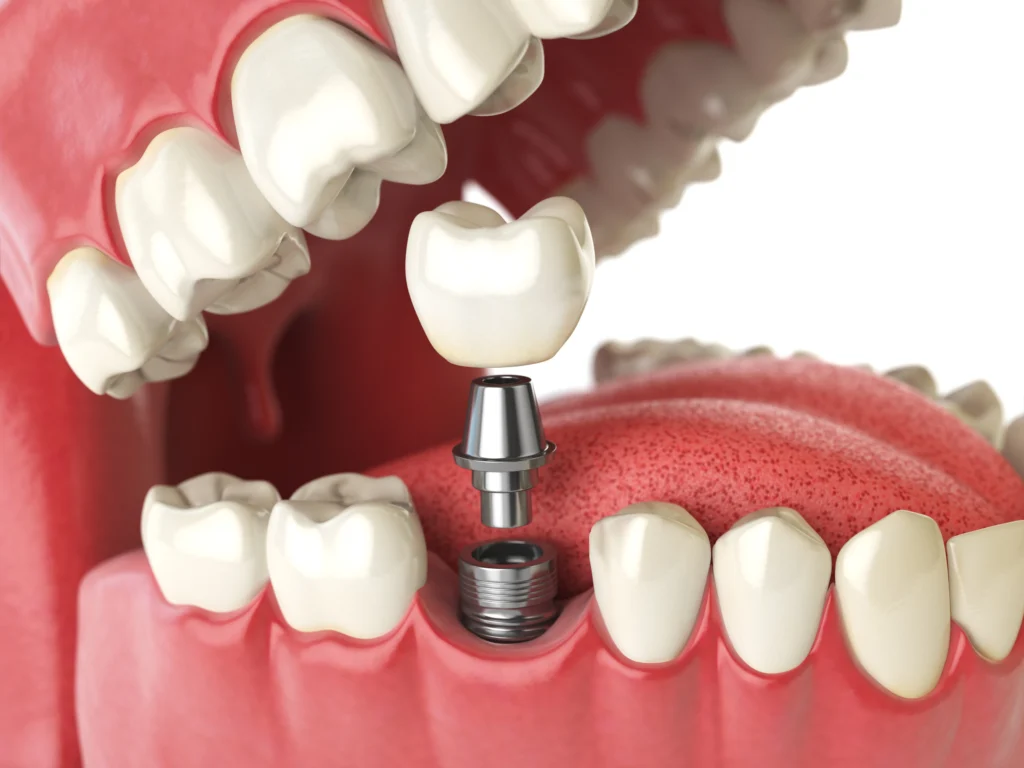
Implant Dentistry Services
Implant Dentistry
1. Placing the Dental Implant: The implant, which is a titanium post, is placed in the bone socket of the missing tooth. This procedure involves local anesthesia. The implant is left to heal and integrate with the bone, forming a solid foundation for the replacement tooth. This process is called osseointegration and may take several weeks to months.
2. Abutment Placement: Once osseointegration is complete, an abutment is attached to the implant post. The abutment serves as a connector between the implant and the replacement tooth. In some cases, the abutment is placed at the same time as the implant.
3. Placing the Artificial Tooth: Lastly, a crown, which is the artificial tooth, is placed on the abutment. This tooth is customized to match the patient’s natural teeth.
Experience a complete dental transformation with our Full Mouth Restoration service. Using state-of-the-art illumination technology, we meticulously address oral health issues, including damaged teeth, misalignments, and more. Our skilled team will craft a personalized treatment plan to restore your smile’s functionality, beauty, and confidence.
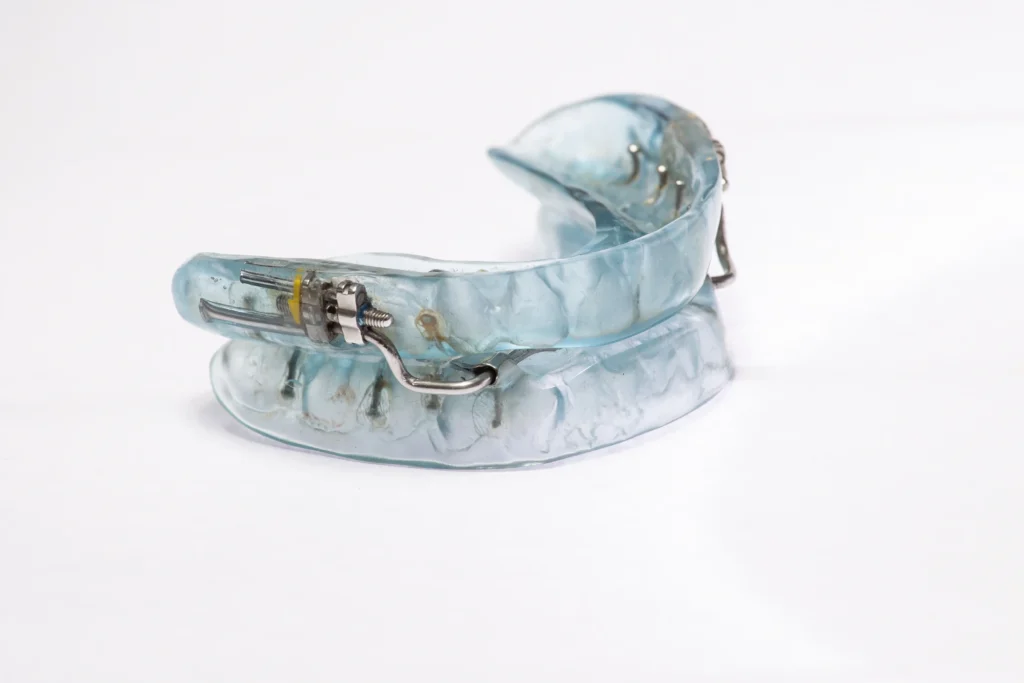
Sleep Dentistry Services
Sleep Dentistry
A dental device for snoring, also known as a mandibular advancement device (MAD), is a type of oral appliance used to treat sleep apnea and snoring. This dental device looks similar to a mouth guard used in sports, but it works by moving the lower jaw forward and slightly downward to keep the airway open while you sleep, which reduces the likelihood of the tongue and throat tissues blocking the airway to cause snoring.
The device is usually made of plastic and can be custom-fit by a dentist based on an impression or a 3D scan of your teeth to ensure comfort. Some of these devices also offer adjustability so that you can modify the extent of lower jaw protrusion to optimize the effectiveness. Dental devices for snoring are often used as an alternative to Continuous Positive Airway Pressure (CPAP) treatment, especially for those who find wearing a mask throughout the night uncomfortable.

Cosmetic Dentistry Services
Cosmetic Dentistry
Rediscover your radiant smile with Teeth Whitening at Illumination Dentistry. Using advanced illumination technology, our safe and effective treatments remove stains and discoloration, revealing a brighter, more confident you.
– A veneer and a crown are both dental restoration procedures that can improve the appearance and function of your teeth, but they have significant differences.
– A veneer is a thin shell usually made of porcelain or composite resin that is bonded to the front surface of a tooth. It’s primarily used for cosmetic improvements, such as: correcting teeth that are discolored, chipped, slightly misaligned, or have gaps. The application of veneers is a less invasive process as it requires only a small amount of tooth enamel to be removed.
– On the other hand, a crown is a cap that covers the entire tooth. It is used for both cosmetic and restorative purposes, such as protecting a weak tooth, teeth that have had a root canal, replace a defective large filling, cosmetic purposes and in restoring a dental implant. The application of a crown involves a more extensive process where more tooth structure is removed to allow the crown to fit over the tooth.
– In summary, while both veneers and crowns can improve the appearance of your teeth, the choice between the two would depend on your individual dental needs, the condition of your teeth, and your dentist’s recommendation.

Orthodontic dental Services
SureSmile- Clear Braces (Invisalign)
Similar to traditional braces, aligners work by exerting gentle pressure to gradually straighten teeth over a period of time. Made from a transparent plastic material these aligners are custom-made to fit snugly over the teeth, gradually shifting them into the desired position. Clear aligners are virtually invisible, making them a discreet choice for those who wish to improve their smile without drawing attention to their orthodontic treatment. They are removable and offer a comfortable and convenient alternative to traditional braces.
